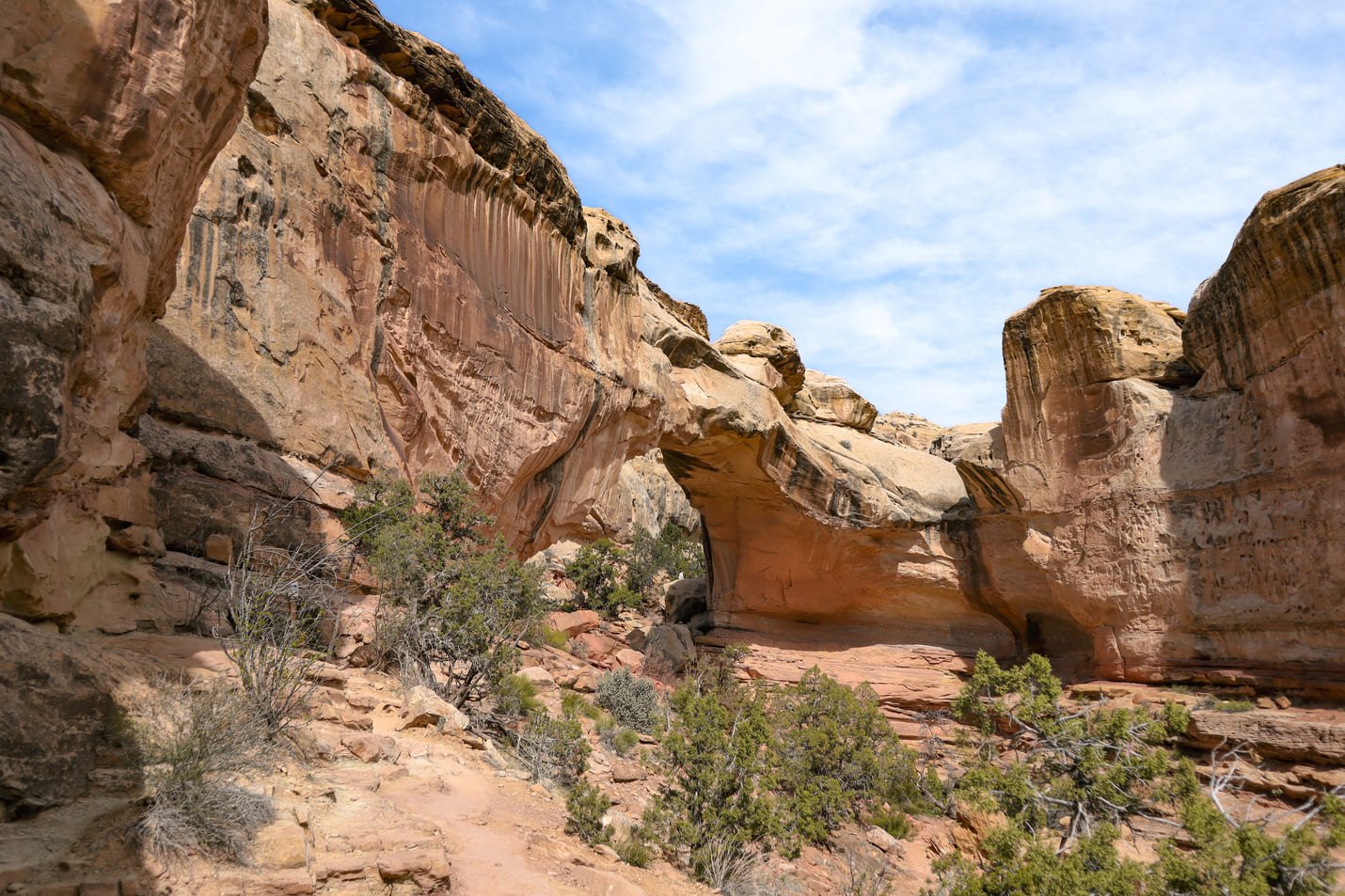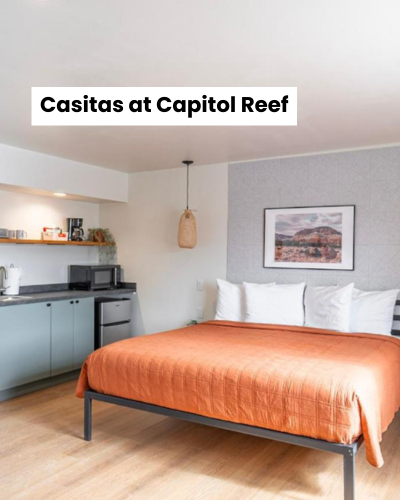If you’re short on time and want to know how to spend one day at Capitol Reef National Park, then this post might be your best friend when organizing a trip to this national park in Utah. Here, you’ll find all the tips you need about what to expect and what to visit in Capitol Reef with limited time.
Capitol Reef National Park is one of the many US national parks, located in the state of Utah. It is part of the famous Utah’s Mighty 5 list, made up of Utah’s most important parks, like Zion National Park or Bryce Canyon.
Although Capitol Reef isn’t as talked about or recognized as the other parks in Utah, I can already tell you that there is a lot to see and do in this park. In fact, this is the second largest park of Utah’s Mighty 5, after Canyonlands. The park covers around 971 km².
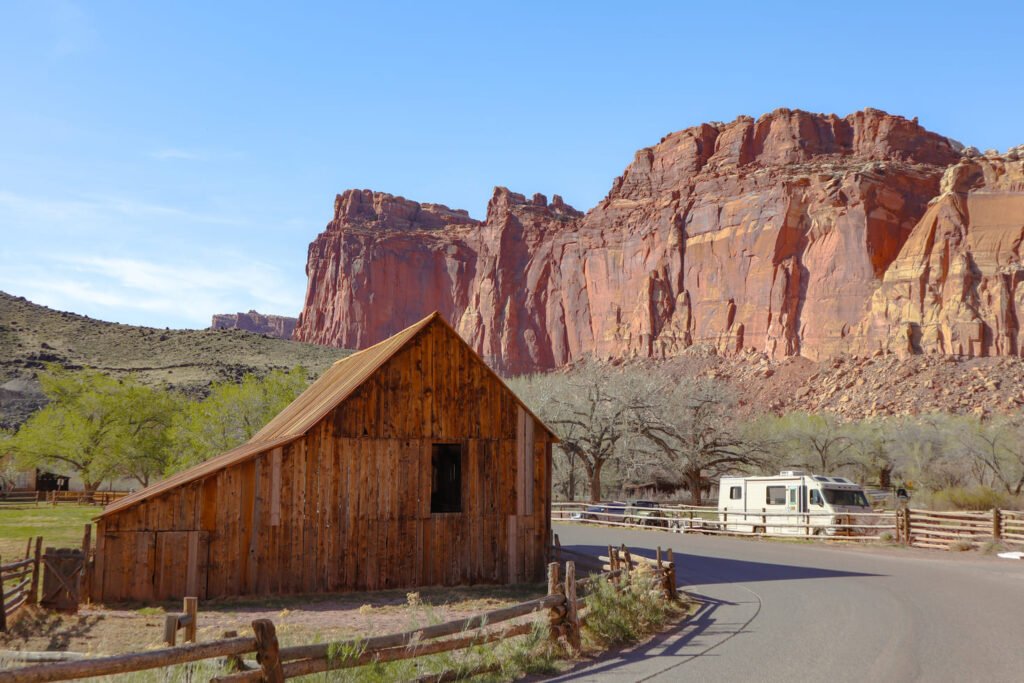
Founded in 1971, Capitol Reef is a park that appeals to all visitors. It’s perfect not only for those who enjoy hiking (whatever their fitness level) but also for those who prefer a more relaxed visit. Many of the best things to do in Capitol Reef are accessible by car.
In addition to the trails that are perfect for the more adventurous, there is much more to discover on Capitol Reef, such as scenic roads, canyons, historic sites and even superb viewpoints.
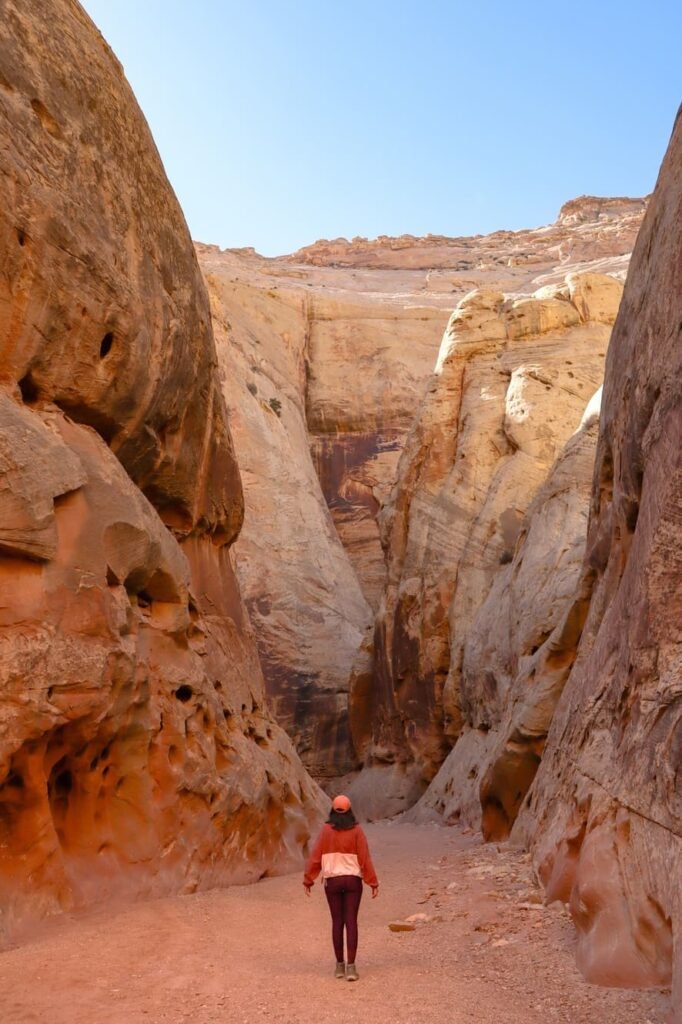
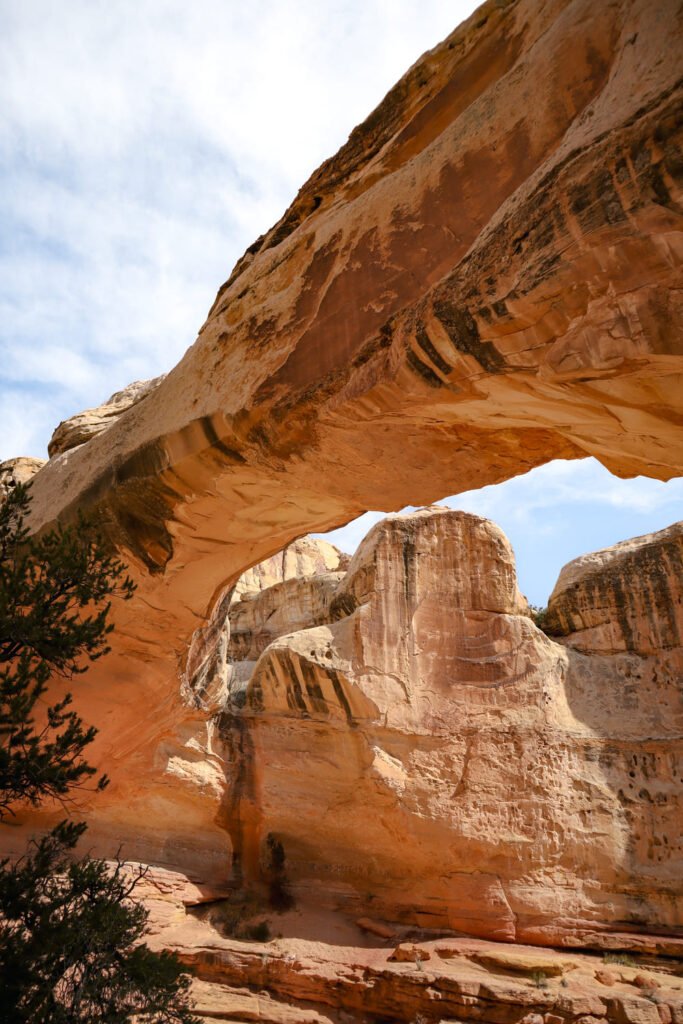
When we talk about this park, we also have to talk about the Waterpocket Fold – a geological formation that stretches through the earth’s crust for more than 160 km (100 mi). This formation appeared 50 or more million years ago and has caused the layers on the west side to move much further upwards than those on the east side (an extra 2000 m/7000 ft). In the meantime, water pockets have been created, which causes erosion to the rock layers that currently exist.
But, as I’m no expert on the subject, I recommend checking out the official Capitol Reef website, where you can learn more about the park’s geological formation, which is very interesting.

I decided to write this post to help you plan a trip to Capitol Reef, including many tips for visiting the park, such as:
- How many days in Capitol Reef National Park?
- Best time to visit Capitol Reef National Park
- How to get to Capitol Reef National Park
- Where is Capitol Reef National Park
Is Capitol Reef worth visiting?
I know that when you’re planning a trip to Utah, Capitol Reef may seem like one of the least interesting national parks. However, this is quite a complete park in terms of what you can visit. There are many things to do in Capitol Reef, such as hiking trails, adventuring in canyons, driving on scenic roads, and sightseeing monuments and historical sites, among others.
What’s more, this is a much less popular park than Zion National Park, Bryce Canyon or Arches National Park , so it’s easier to visit because there are fewer visitors in the park’s main attractions and there’s also less traffic inside the park.
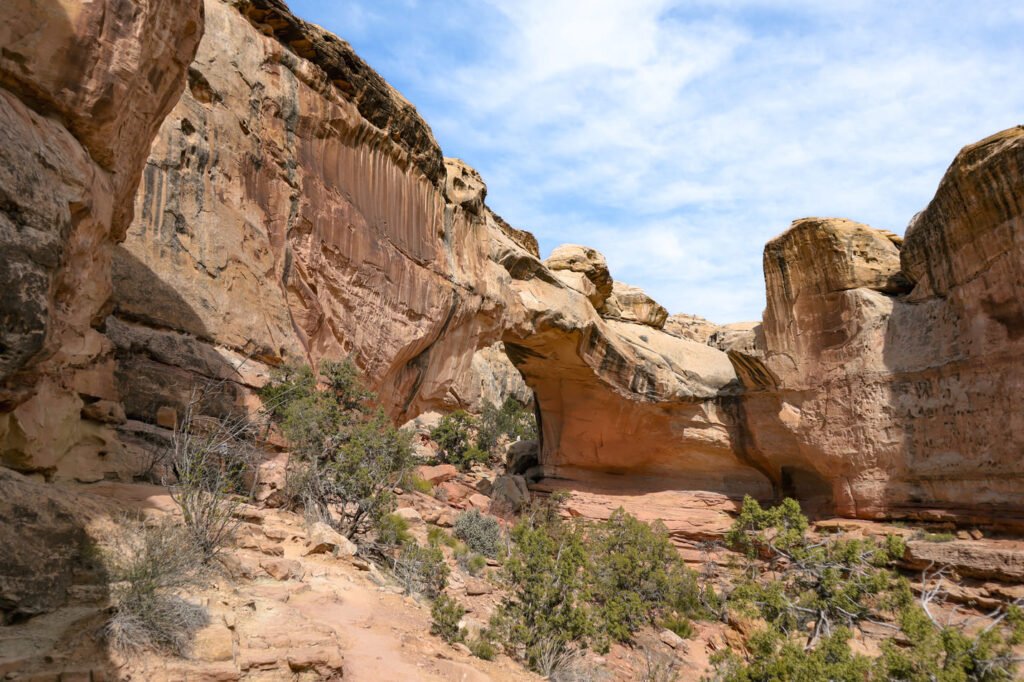
In addition, given the dimensions of this park, there are even more remote areas in the park that are worth visiting, such as the Cathedral Valley, for example.
I think I’ve already listed several reasons why Capitol Reef is worth a visit and I hope, throughout this article, to convince you even more that visiting this national park will be worth it 😄.
Where is Capitol Reef National Park?
Capitol Reef National Park is located in southern/central Utah. There are no major cities close to the park, and these are the closest major cities to Capitol Reef (and the driving distance between each city and the park):
- Salt Lake City – 3h20
- Las Vegas – 5h10

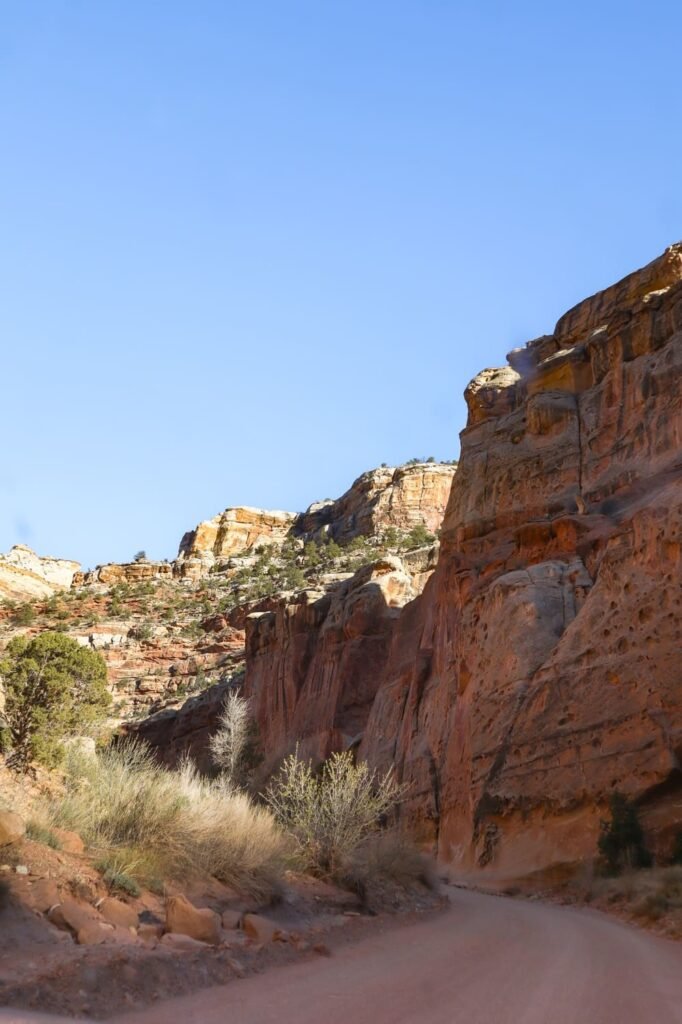
However, other smaller towns are relatively close to Capitol Reef. The closest is Torrey, a small town just a few minutes drive from the park. Other options include Boulder (64 km, 40 mi) or Escalante (107 km, 67 mi), for example.
Although further away, given their proximity to other national parks in Utah, another option is to stay in Moab or Bryce Canyon City. From Moab to Capitol Reef is about 2h10 by car and the drive from Bryce Canyon City is about the same.
How many days in Capitol Reef National Park?
Given the size of this park, the number of days needed to visit Capitol Reef National Park will depend a lot on what you plan to visit. The park really does have a lot to offer!
In my case, for example, I only spent one day visiting the park. With a day in Capitol Reef National Park, you can do part of the Scenic Drive along Highway 24, visit the historic site of Fruita, pass by some of the best-known viewpoints in the park and even do at least one of the shorter hiking trails.
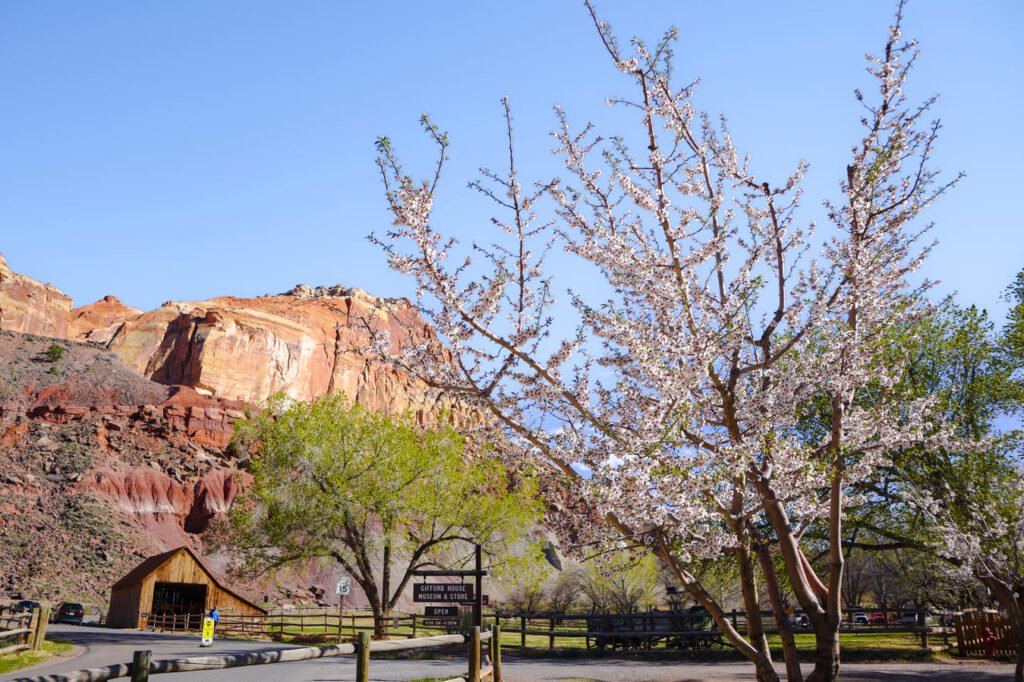
With more days, you can add other trails to the list of what to do in Capitol Reef National Park and possibly visit more remote areas of the park, such as Cathedral Valley, which is one of the things I regret the most not to have visited in the park.
So there is no right answer to this question! I’d say visit the park no matter how many days you have available! Any time spent in Capitol Reef is better than none 😁.
What is the best time to visit Capitol Reef National Park?
Capitol Reef’s climate is arid. Summers are marked by very high temperatures, but in winter it often snows.
In summer, in addition to the uninviting temperatures, there are more visitors (although fewer people visit this park when compared with the more famous parks, such as Zion, Bryce Canyon or Arches). In addition, July and August are the months when it rains the most, with the possibility of flash floods.

On the other hand, the low temperatures in winter and the frequent presence of snow mean that some roads and trails may be closed, making this not the best time to visit the park.
So, the best months to visit Capitol Reef National Park are the ones in spring and fall. At this time of year, temperatures are milder and the number of visitors to the park is also lower. Find out more about the average temperatures at Capitol Reef on the park’s official website.
I visited Capitol Reef at the beginning of April and it was already quite warm, but not unbearably so. In fact, by the end of the day, the temperatures were starting to drop, calling for warm clothes. As for the number of visitors, I hardly saw any people in the park 😆!
How to get to Capitol Reef National Park?
The closest airport to Capitol Reef National Park is Salt Lake City International Airport, located about 3h30 drive from the park. There are other airports closer to the park, but these are regional airports, with few domestic flights available:
- Canyonlands Regional Airport – 1h50 from the park
- Grand Junction Regional Airport – 2h50 from the park
- St. George Regional Airport – 3h40 from the park

So the best option is to fly to Salt Lake City, rent a car there and drive to the park. In fact, this is what most people end up doing, taking the opportunity to combine a visit to Capitol Reef with other parks on Utah’s Mighty 5 list.
💡 EXTRA TIP: When I visited Capitol Reef National Park, I was doing a road trip through other national parks in the United States. There’s no doubt that renting a car was the best option, as it gave me a lot of freedom to prepare my itinerary. I rented a Toyota RAV4 from Avis in Los Angeles and really enjoyed their service. The decision to rent a jeep was clearly the right one since it was very practical for driving some of the roads in Capitol Reef.
How much is the entrance fee to Capitol Reef National Park?
You have to pay to visit some parts of Capitol Reef National Park. There are various entrance tickets and passes available. For example, entrance fees with a private vehicle are 20 USD (the price is per vehicle, not per person). This entrance fee gives you access to the park for 7 days! There is also an annual pass which costs 35 USD.
However, if you wish to visit other national parks in the United States, other options are more worthwhile. One such example is the America the Beautiful annual pass. This pass costs 80 USD per vehicle and is valid for one year for all the national parks in the country. Given the average price of entry to the various parks, you only need to visit 3 national parks in a year to make it worth buying America the Beautiful! More information about the passes is available here.

Any of these tickets or passes can be bought at the entrances to the various national parks. Alternatively, you can buy it online 😉.
Unlike other national parks, in Capitol Reef, you only have to pay admission to the park if you drive the Scenic Drive. Many of the park’s points of interest are located along Highway 24, in which case no entrance fee is required.
If you choose to buy the America the Beautiful annual pass, once you’ve bought it, you’ll need to show your pass and ID when entering each park, as the pass is non-transferable.
Is there cell service at Capitol Reef National Park?
The cell service in Capitol Reef National Park is quite limited, so you should be prepared for no internet access. In my case, for example, during the whole day I spent in the park, I rarely had cellular service on my phone. Therefore, I strongly suggest downloading the map of the park area to be available offline on Google Maps.
What is the best way to visit Capitol Reef National Park?
Public transport within the park is non-existent, so the best way to visit the park is by car.
For most areas of the park, a “normal” vehicle should be enough and you won’t need a 4×4. However, there are some roads in the park (such as the one leading to Cathedral Valley) where a high-clearance vehicle is required.
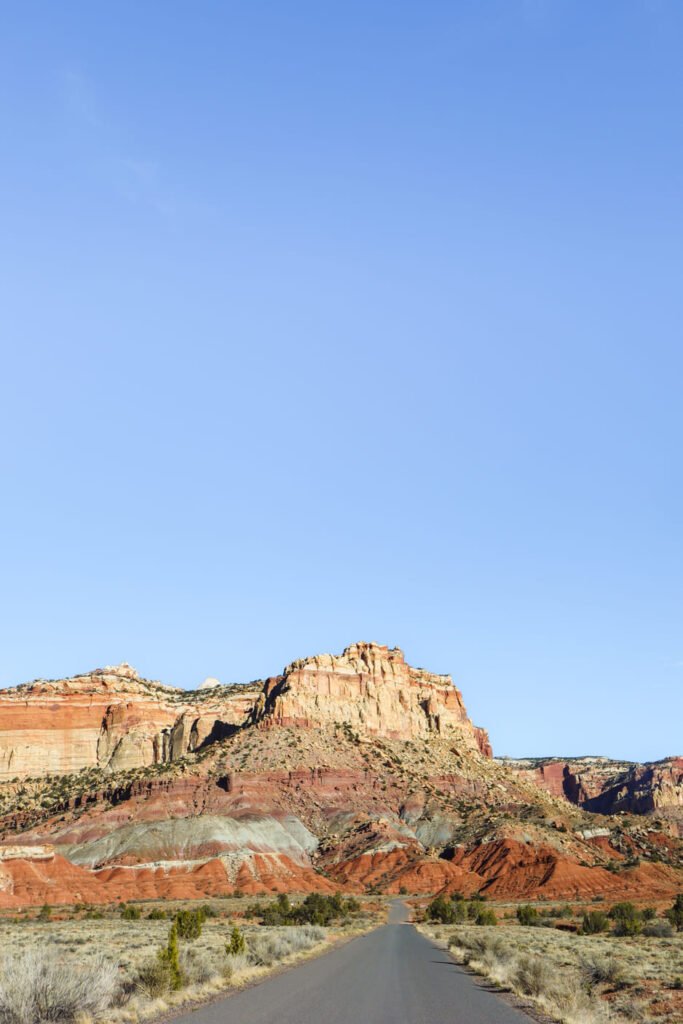
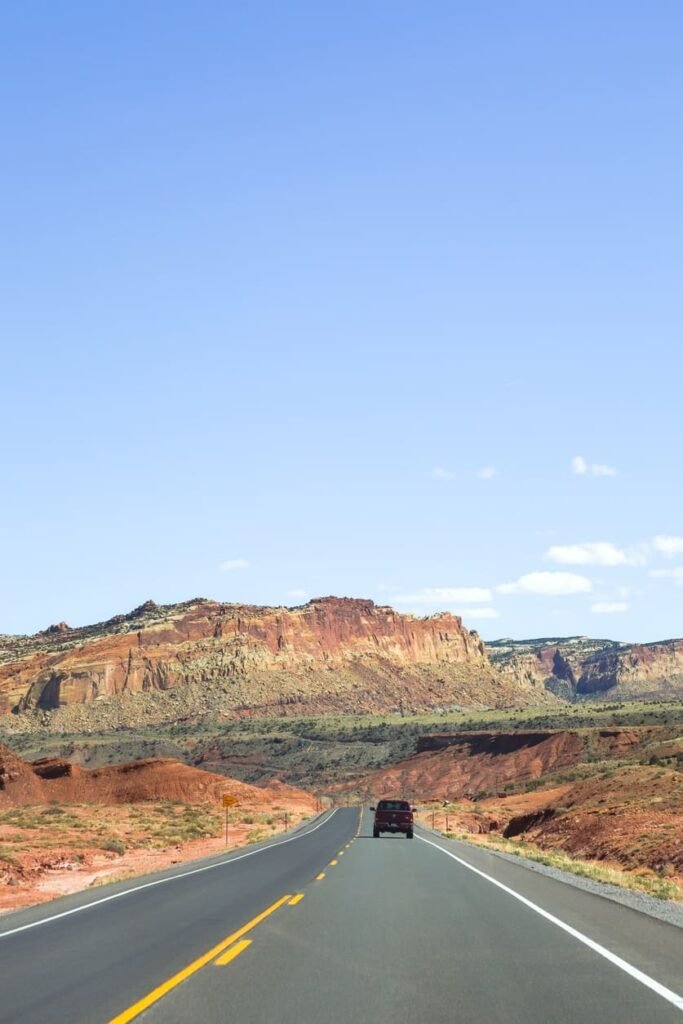
So, even if it is possible to visit the highlights of Capitol Reef without a 4×4, I recommend renting a high-clearance vehicle to make your visit more comfortable 😉.
💼 TRAVEL INSURANCE: Unexpected events happen anywhere in the world, so I always recommend getting travel insurance. I regularly use Heymondo, which offers some of the highest coverages on the market at very competitive prices. As well as covering medical expenses, Heymondo’s insurance also covers the loss or theft of luggage, electronic equipment and more. They also have a 24/7 customer service through their App. As A Ticket to Take Off reader, you get a 5% discount when purchasing Heymondo insurance. The purchase must be made using this link, and the price shown on the website already includes the discount.
Is there food inside Capitol Reef National Park?
There is practically nowhere to buy food inside the park. The only place that sells any food is Gifford House, which sells snacks during the spring and summer months.
However, in the nearby towns (such as Torrey, Boulder or Hanksville) you can find some restaurants where you can have a more complete meal.


For example, when I visited the park, I had a meal in Hanksville at Duke’s Slickrock Grill and found the food good and the restaurant pleasant.
However, to make the most of your time in the park, I suggest taking some snacks for the day and a picnic for lunch.
Best places to stay near Capitol Reef National Park
Although there are no accommodations inside Capitol Reef National Park, there are some options available nearby.
For example, in my case, I stayed one night at Capitol Reef Resort. This accommodation is very close to the park’s west entrance and has various types of accommodation, including some glamping options. In my case, I ended up staying in one of the more basic rooms, but even so, the room was quite spacious and looked well-maintained. A night for 2 people in April cost 110€.
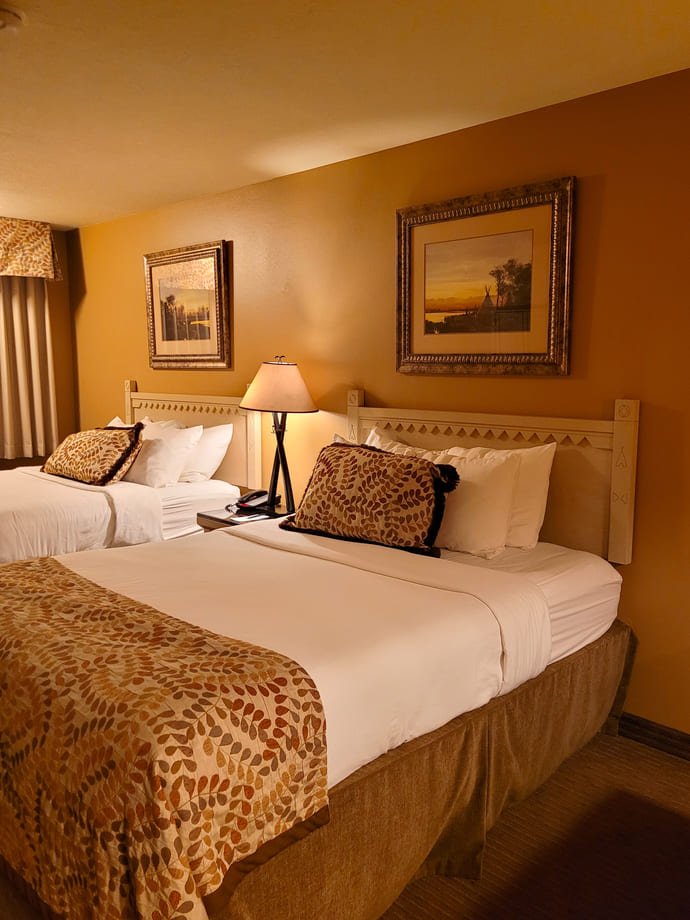

In addition, the communal areas are pleasant (including fire pits that are lit every night) and the hotel also has a restaurant service (the food was reasonable and the prices acceptable).
Even so, there are other options for places to stay near the Capitol Reef. These are some of my suggestions:
Another option is to stay at one of the Capitol Reef National Park campsites. The most popular in the park is the Fruita campsite, which costs 25 USD and can be booked from March to October. During the other months of the year, it works on a first-come, first-served basis.
There are other camping options in more remote areas of the park. Find out more on the official website.
How to get into Capitol Reef National Park?
There are two possible entrances to the park. The first is from Scenic Drive, located in the northern part of the park, and the second is next to Fruita, in the southern part of the park.
The Visitor Center is located at the intersection of Highway 24 with the Scenic Drive and is open every day from 8 am to 4.30 pm. Remember that you only have to pay for the entrance ticket if you want to drive the Scenic Drive.
Activities & Tours in Capitol Reef National Park
Capitol Reef National Park Map
To help you plan your Capitol Reef National Park itinerary, I’ve put together its main points of interest on a map. I’ve divided Capitol Reef’s attractions into two parts: what to visit in one day and additional suggestions for places to visit with more time.
📌HOW TO USE THE MAP: Click on the top left corner to access the various layers of the map. You can select the layers you’re interested in and also find out more about each point of interest by clicking on it in the left-hand sidebar or on the pin on the map. Add the map to your Google Maps by clicking on the star next to the title. To access the map, simply go to Google Maps ‘Saved’ and click on ‘Maps’!
How to spend one day in Capitol Reef National Park
The following itinerary is for one day at Capitol Reef National Park. The various sites in the park are arranged in a logical order to optimize the time available.
However, if you have more days available, you can also find more tips on what to visit at Capitol Reef at the end of the post.
» Grand Wash Trail
If there’s one thing you can’t miss in Capitol Reef National Park, it’s the trails. So I suggest starting this itinerary with one of the best-known trails in Capitol Reef – the Grand Wash Trail.

This is a fun hiking trail, even if you don’t walk its entire length. This trail is special because you get to walk in a canyon. In my case, I only did part of the trail, the part where it’s narrowest and the most beautiful too. I walked about 3 km/1.8 mi (round trip) to the narrowest part of the trail – The Narrows.
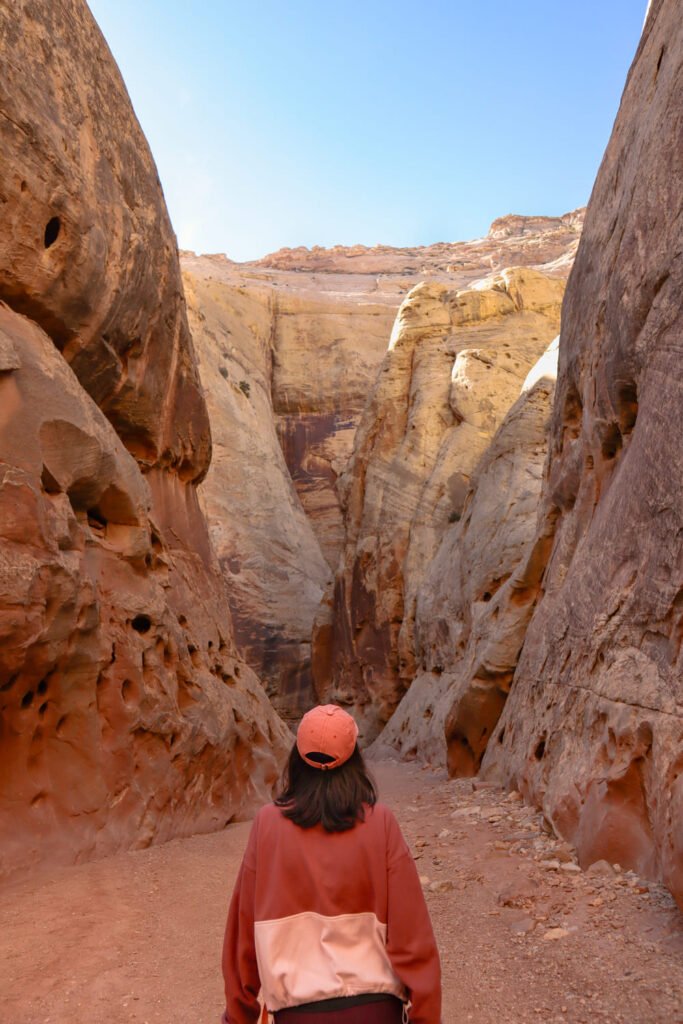

So, I suggest only hiking part of the trail. Just walk a bit into the canyon and return when you start to get bored!
Useful information about the trail:
- Start of the trail: Highway 24 or Grand Wash Road (for this itinerary, I suggest starting the trail on Highway 24).
- Distance: 7.2 km (4.4 mi) round trip
- Difficulty: Easy
- Elevation: 60 m (200 ft)
- Recommended duration: 2h to 3h
- The trail can be shortened by taking the trail to the narrowest part of the trail (The Narrows). If you choose this option, the round trip is about 3 km (1.8 mi).
💡 EXTRA TIP: You can use this trail to also do the Cassidy Arch Trail, as they both start at the same place (if you choose to start the Grand Wash Trail on the Grand Wash Road). In fact, to get to Cassidy Arch you’ll have to walk part of the Grand Wash Trail.
» Hickman Bridge Trail
Continuing along Highway 24, hike another trail to the Hickman Bridge. This is one of the best hikes in Capitol Reef National Park as the trail is relatively simple and easily accessible.
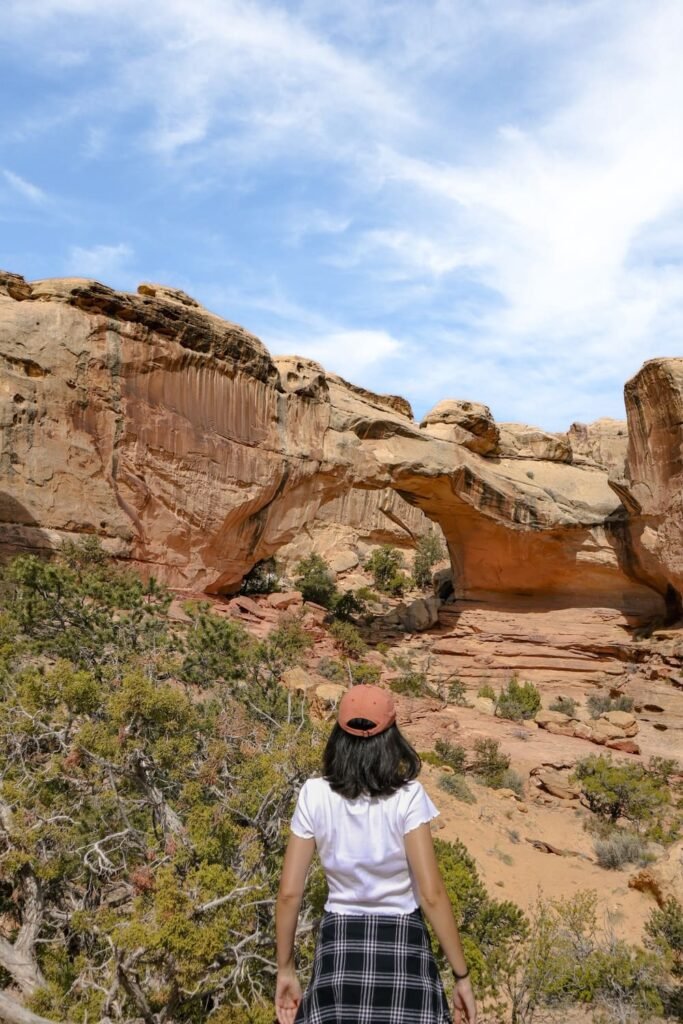
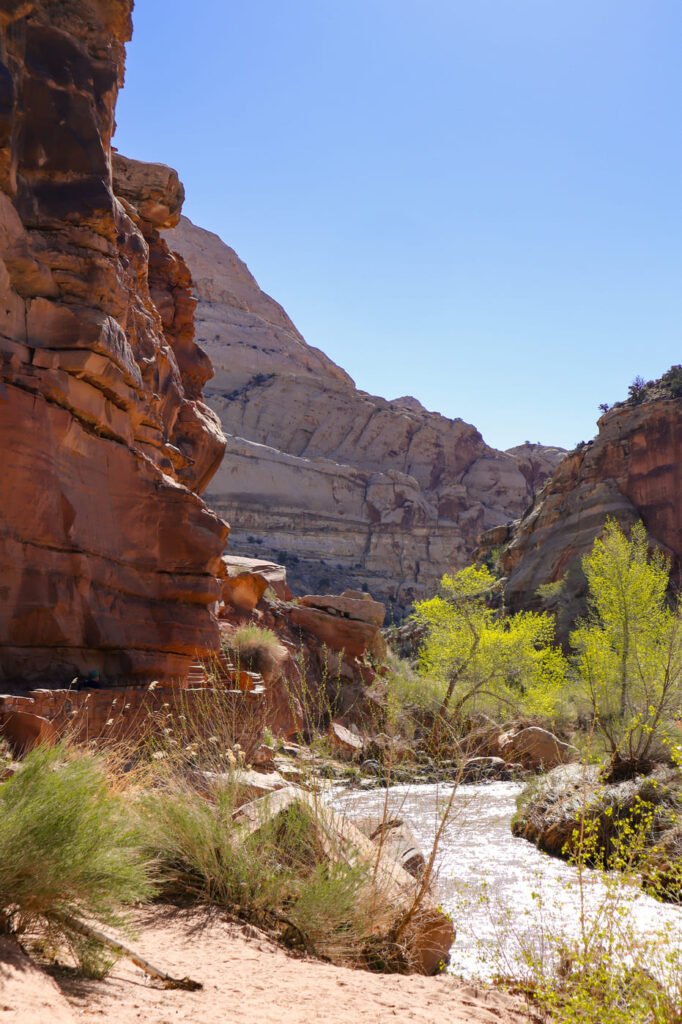
The trail has a few steep parts, however, they aren’t that hard. This is a loop trail, although you return along practically the same route that leads to Hickman Bridge. You can pass under the Hickman bridge and observe it from different perspectives.
Useful information about the trail:
- Distance: 2.8 km (1.8 mi) round trip
- Difficulty: Easy to Moderate
- Elevation: 122 m (400 ft)
- Recommended duration: 1h30 to 2h
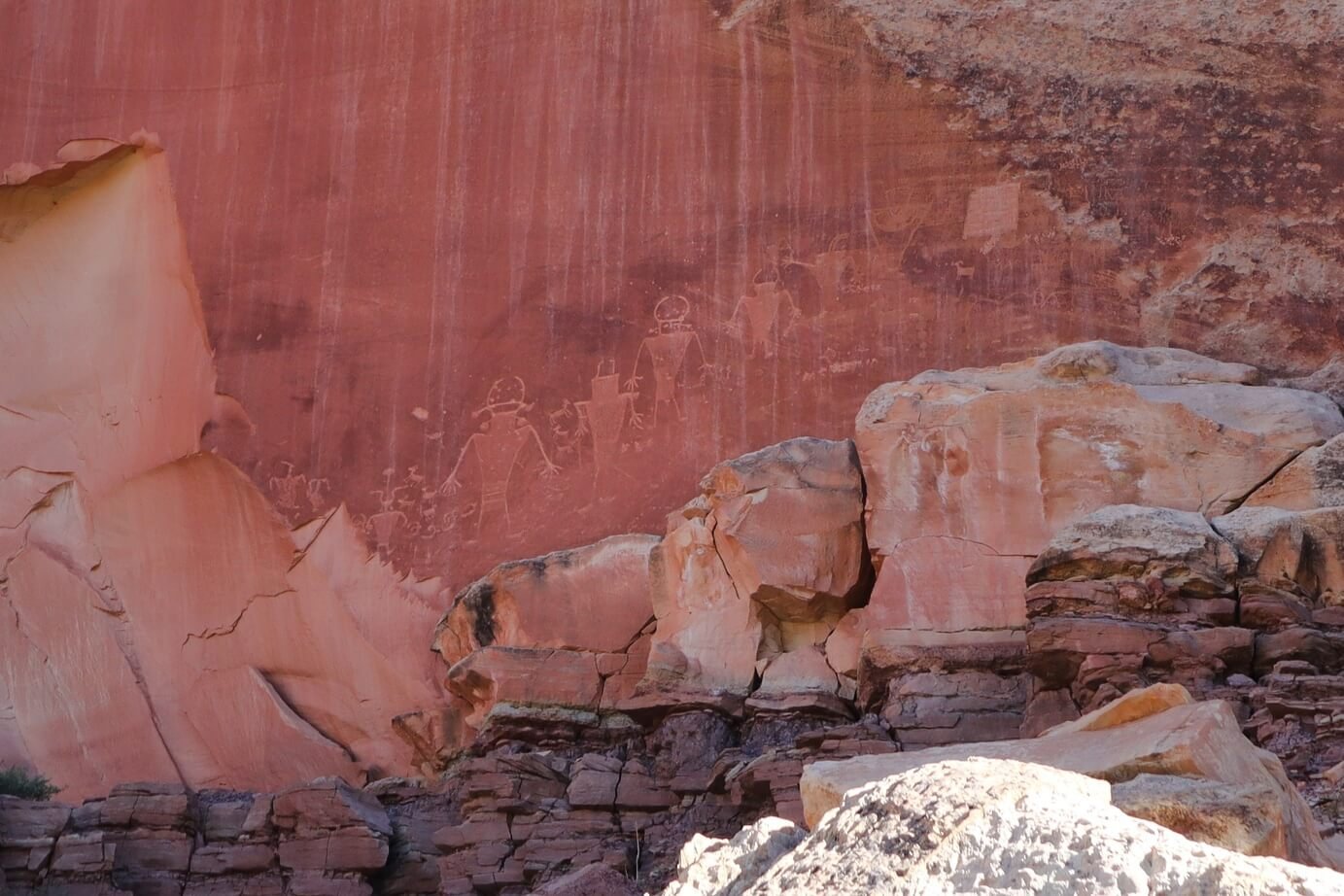
💡 EXTRA TIP: On the way to the next point of interest, I recommend another stop to see the petroglyphs of ancient Native Americans.
» Capitol Reef Scenic Drive
The Scenic Drive in Capitol Reef is another must-see in this park. As the name suggests, this is a scenic road that will make you want to stop many times while driving 😍.
The road is 12.7 km (7.9 mi) one way and starts next to Highway 24. To visit this part of the park you have to pay an entrance fee. The 7-day pass costs 20 USD, but if you’re going to visit other parks, I recommend buying the America the Beautiful annual pass.
📝 USEFUL INFORMATION: The Scenic Drive is closed during the summer of 2024 for a rehabilitation project. Check the official website for the latest updates on this closure.
» Fruita
Take advantage of the Scenic Drive to explore the historic district of Fruita. This is an important place in the history of Capitol Reef National Park, as it was here that the pioneers settled at the end of the 19th century.
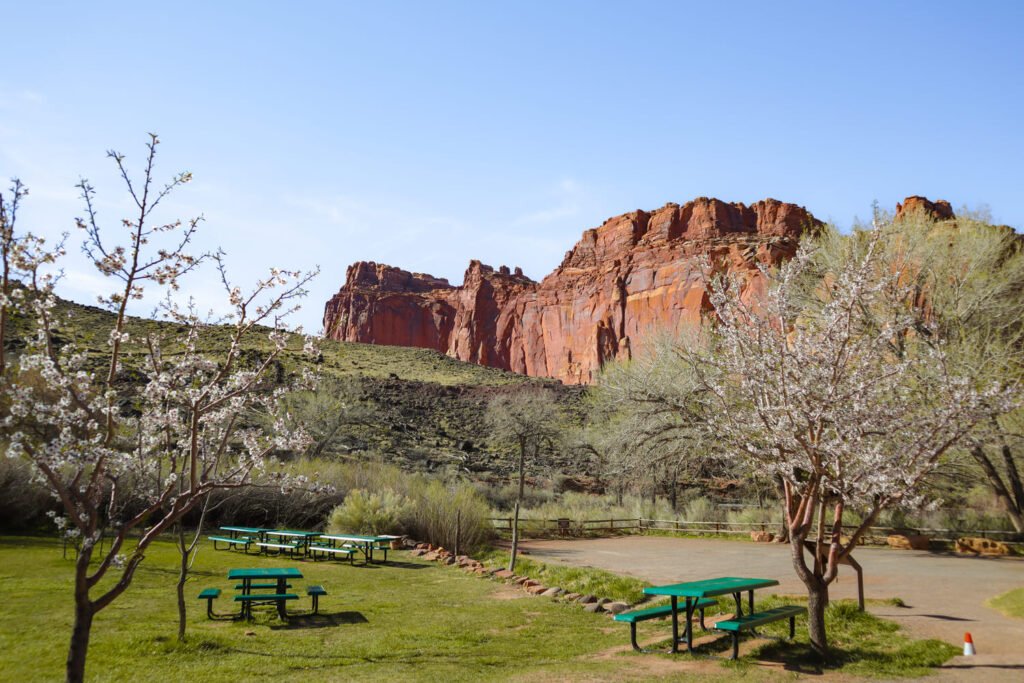
The Gifford House is one of the buildings still standing from the period and where you can now try the famous Capitol Reef fruit pie. You can also buy local handicrafts at the Gifford Homestead.
» Capitol Gorge Road
Travelling along the Scenic Drive, you’ll reach a point where you can choose between two roads: Capitol Gorge Road or Pleasant Creek Road. Take Capitol Gorge Road – you won’t regret it!
This is a dirt road. I recommend it especially if you have a 4×4, although I think it’s feasible to drive there with a “normal” vehicle.
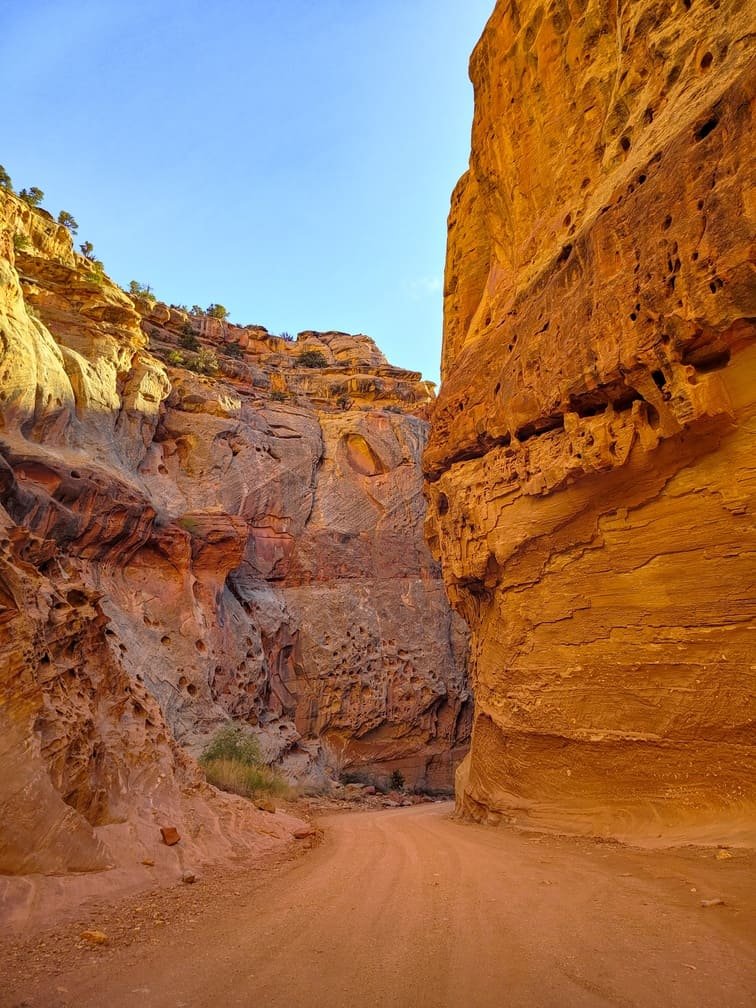
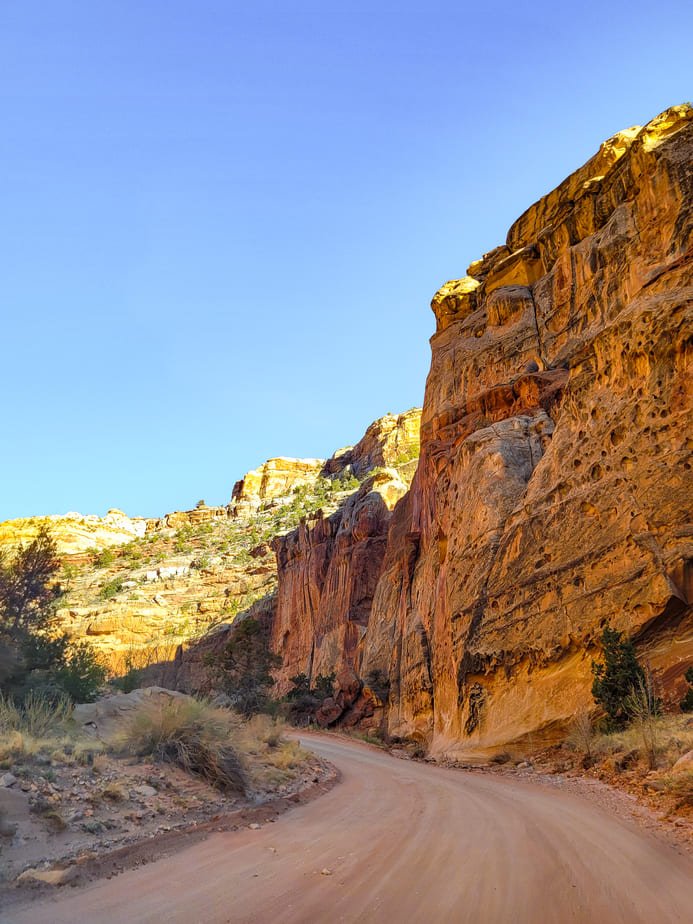
The Capitol Gorge Road is only 3.5 km (2.2 mi) one way, but you will inevitably have to drive it both ways as this is a dead-end road.
This is one of the most beautiful roads in Capitol Reef National Park as it runs through a canyon.
💡 EXTRA TIP: At the end of the road, you’ll find the start of the Capitol Gorge trail, where you can find the Pioneer Register – records of the pioneers on the canyon walls. The trail to get there is simple and only 3.2 km (2 mi) round trip.
» Sunset Point
Return to Highway 24 to see some of the best viewpoints in Capitol Reef National Park. The three viewpoints I’m going to recommend now are located on Goosenecks Road, which starts on Highway 24.
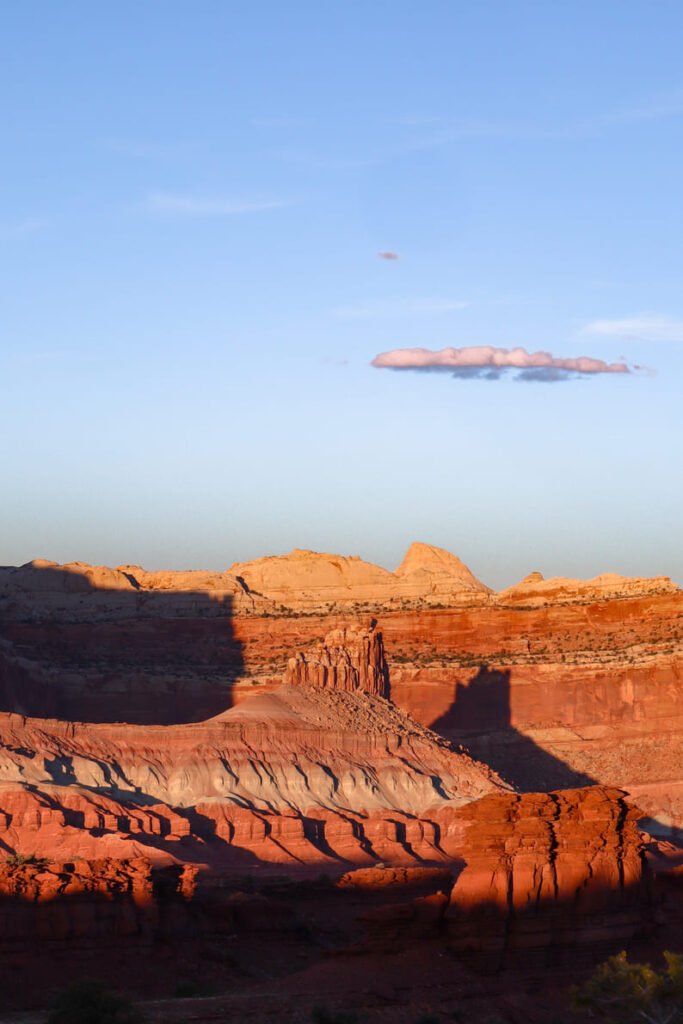
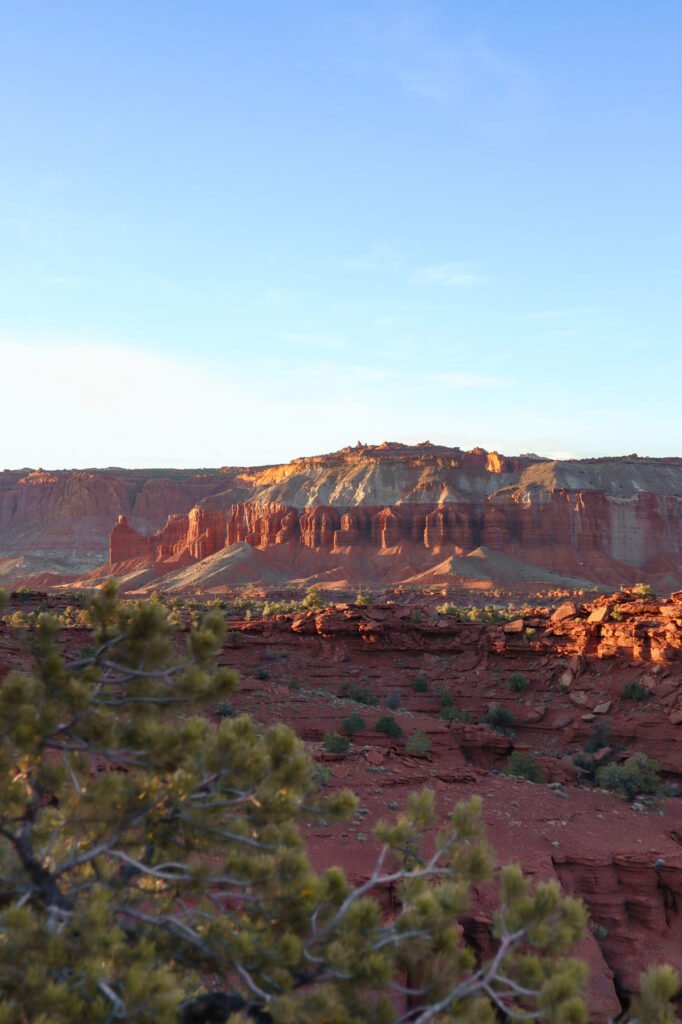
Drive to the end of that road and start at Sunset Point. You have to walk a bit from the parking lot to get to the viewpoint, but the route is fairly easy (0.6 km/0.4 mi one way).
This was one of the places where I encountered the most tourists, but I also visited it during sunset, when this viewpoint is most popular.
» Goosenecks Overlook
Next to Sunset Point, you can also take the opportunity to go to Goosenecks Overlook. The parking lot is the same as Sunset Point.
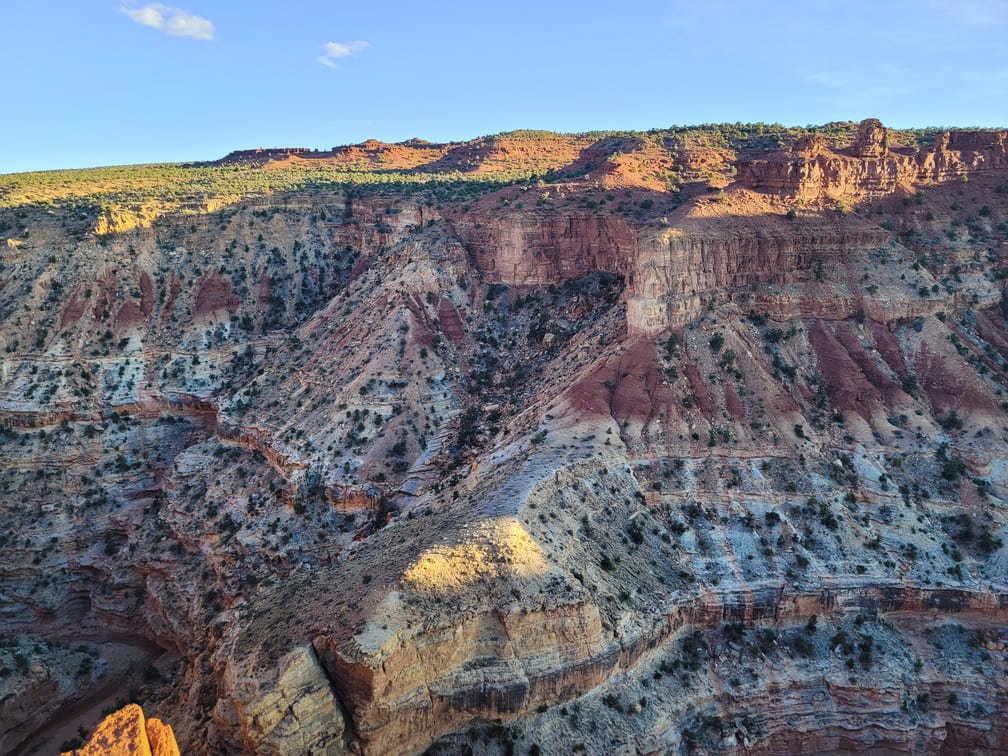
I didn’t like it as much as Sunset Point, but this viewpoint is even easier to get to, so it might be worth stopping by. From the parking lot, it’s a 0.2 km (0.1 mi) walk to the viewpoint.
» Panorama Point
It’s time to head to the last stop of the day for another viewpoint – Panorama Point. This viewpoint is also located on Goosenecks Road and is one of the best places to observe and photograph the emblematic Highway 24 that crosses Capitol Reef.
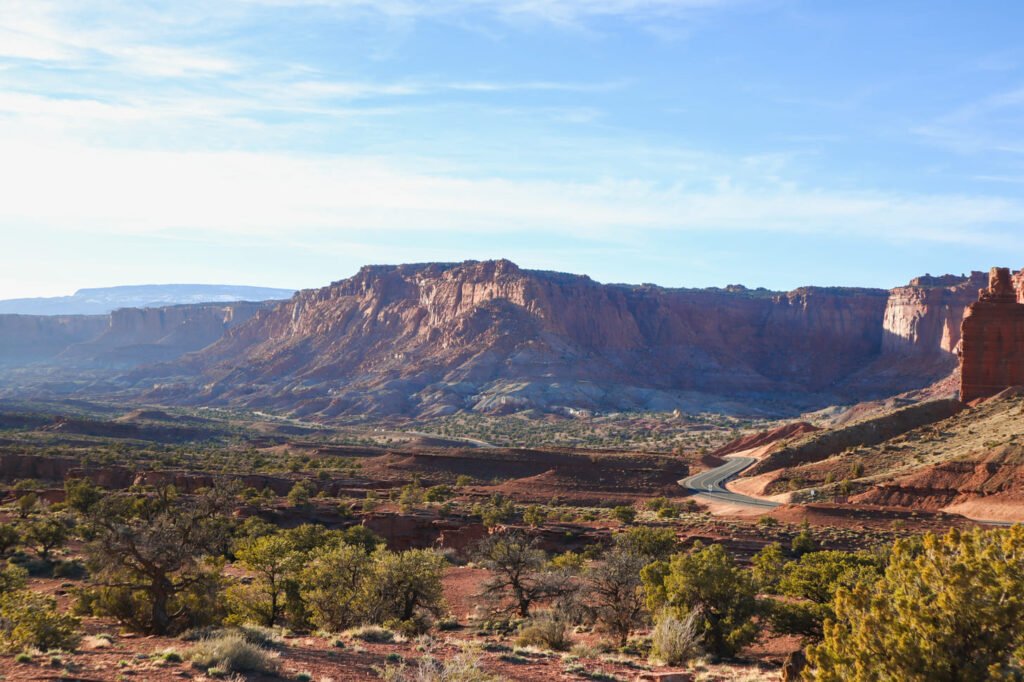
As with the other viewpoints, access to this viewpoint is also very easy, with parking right next to it.
What else to see in Capitol Reef National Park
Do you have more time to spend in Capitol Reef National Park? Great news 🥰! You’ll have the chance to visit places that most visitors don’t get to see.
Other hikes in Capitol Reef National Park
In the 1-day Capitol Reef itinerary in this article, I had the opportunity to recommend 2 trails (Hickman Bridge and Grand Wash). However, there are other trails in the Fruita district that are worth considering.
| Trail | Distance (one way) | Elevation | Difficulty |
|---|---|---|---|
| Cohab Canyon | 2.7 km (1.7 mi) | 134 m (440 ft) | Moderate |
| Fremont River | 1.7 km (1.0 mi) | 146 m (480 ft) | Moderate |
| Cassidy Arch via Grand Grand Wash | 5.8 km (3.6 mi) | 246 m (870 ft) | Difficult |
| Chimney Rock Loop (roundtrip) | 5.9 km (3.6 mi) | 180 m (590 ft) | Difficult |
| Fremont Gorge Overlook | 3.6 km (2.3 mi) | 332 m (1.090 ft) | Difficult |
| Frying Pan | 4.6 km (2.9 mi) | 247 m (810 ft) | Difficult |
| Navajo Knobs | 7.6 km (4.7 mi) | 494 m (1.620 ft) | Difficult |
| Rim Overlook | 3.6 km (2.3 mi) | 338 m (1.110 ft) | Difficult |
Of these trails above, one of the most interesting is Navajo Knobs, because if you hike it, you’ll get to see one of the best views in the park.

It’s also possible to hike in the more remote areas of the park. The options are (almost) endless, so there’s nothing better than checking out the park’s official website to find out more about these trails:
Cathedral Valley
If you enjoy more remote places, then Cathedral Valley is the ideal place for you. I must admit that this was the place I was most sorry not to have been able to visit. The Cathedral Valley is a 93 km (58 mi) loop dirt road. The landscapes along the way are beautiful and I dare to say possibly the most beautiful in the whole park.
To travel this road, you’ll need a 4×4, but there are some tours that include Cathedral Valley. A visit to the Cathedral Valley can take from half a day to a full day, depending on the stops you make along the way. More details about this route here.
Loop the Fold
This is another scenic route that you can do by car on the Notom-Bullfrog Road. It’s also located in one of the most remote areas of the park and requires a 4×4, as most of the path is on a dirt road. Along the way, you can make a few stops to explore some of the slot canyons there.
Bentonite Hills
I’d also suggest a place that’s not located inside Capitol Reef, but relatively close by. The Bentonite Hills are a kind of brightly coloured hills that have recently gained popularity on Instagram.

However, I warn you that the photos look particularly cool if you take them with a drone.
You’ll easily find Bentonite Hills on Google Maps, but it is also possible to visit an identical and more easily accessible place next to the Mars Desert Research Station. In both cases, you’ll have to drive on a dirt road to get there.
Factory Butte and Moon Overlook
Also near the Bentonite Hills, you can visit two other amazing landscapes that look like you’re on the moon: Moon Overlook and Factory Butte.
Both sites are particularly beautiful at sunrise and sunset when the rock formations’ dark colours stand out even more.
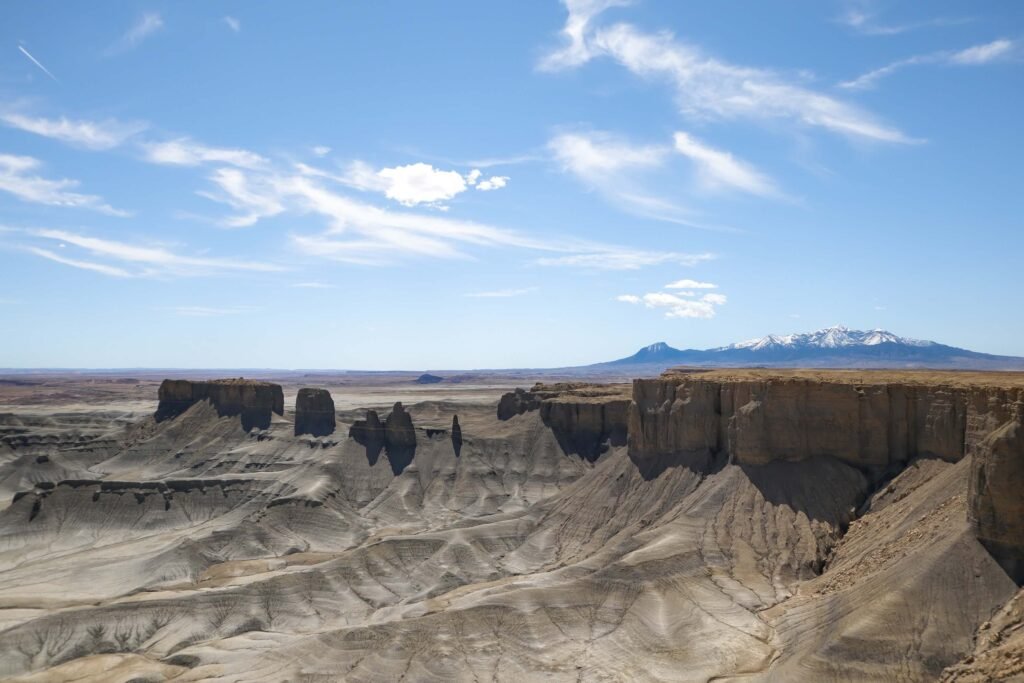
The route to reach these two sites is also a bumpy dirt road and I definitely recommend doing it only with a high-clearance vehicle.
It’s a small detour from Capitol Reef, but if you have a little extra time, it’s an excellent addition to your itinerary. The scenery is out of this world!
💡 EXTRA TIP: If you’re going to/from Arches National Park or Canyonlands National Park, these two places aren’t a big detour.
Tips for hiking in Capitol Reef National Park
Hiking in Capitol Reef National Park is a very interesting activity! However, depending on the weather conditions at the time of your visit, some precautions should be taken. These are some of the park’s official recommendations:
- Protect from the sun with a hat, sunglasses, light clothing and sun cream.
- Ensure the necessary hydration while hiking any trail.
- Plan your visit in advance to avoid going on the trails at the hottest time of the day.
- In the colder months, it’s important to be prepared for cold temperatures. It usually snows in winter.
- On days with fewer hours of daylight, make sure you return from the trail when there is still light since it gets dark earlier.
- If you’re going to walk a trail alone, tell someone you know that you’re doing it.
- Check the official website in advance to confirm any temporary trail or road closures.
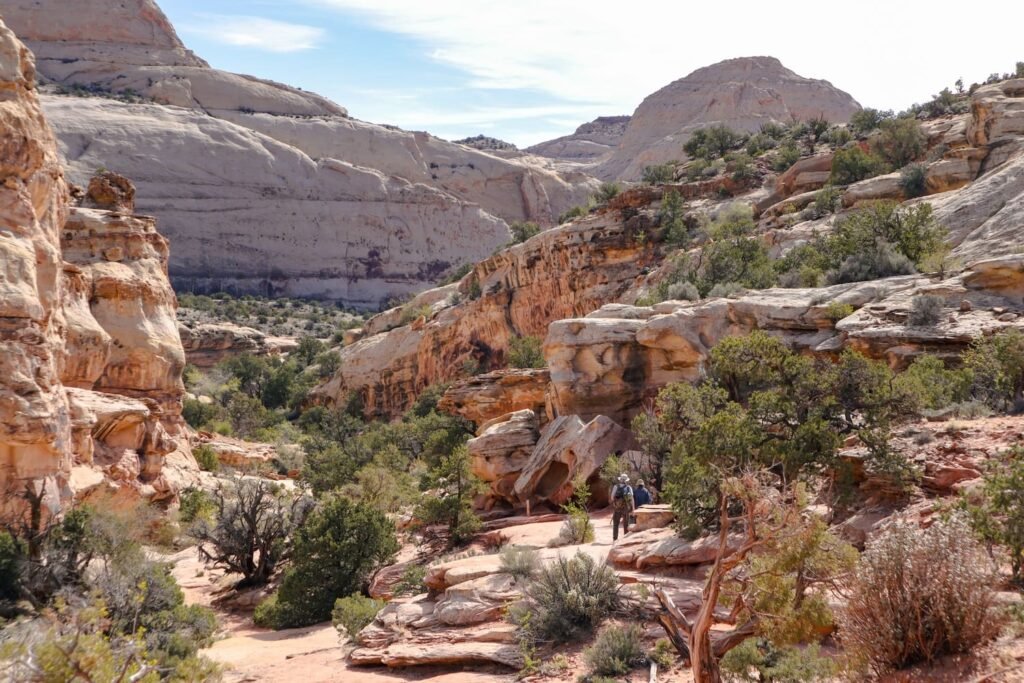
Finally, don’t forget the Leave No Trace principle, by complying with its 7 principles: prepare your visit in advance, dispose of rubbish in appropriate places, leave everything the same way as you found it, minimise the impact of any campfires, respect wildlife, be respectful to other visitors and comply with the camping rules.
Disclaimer: this post may contain some affiliate links, which means I get a small commission if you buy something through my links. This doesn’t represent any additional cost to you and you’ll be supporting my work here on the blog😊

